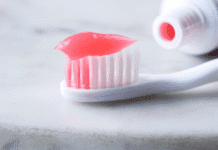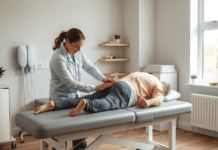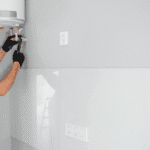Last Updated on August 24, 2025 by Nasir Hanif
Medical care has become more flexible over time. People no longer need to visit clinics for every service. One example of this change is intravenous therapy. It is now possible to receive this care at home, guided by trained medical staff. This approach has helped many people stay safe, comfortable, and well cared for without leaving their homes.
Intravenous therapy involves sending fluids directly into the bloodstream. This is done using a thin, sterile tube inserted into a vein. It helps with hydration, medication delivery, vitamin support, or recovery after illness. It is used for both short-term and long-term care needs.
For this method to be safe, certain steps must be followed. The doctor or nurse handling it must be trained. The space must be clean. The supplies must be sterile. Each step matters. A home visit doctor is trained to carry out this work with precision and care.
This article explains how intravenous therapy is safely done in home settings. It focuses on safety, patient readiness, and proper procedure.
Table of Contents
When Is an IV Drip Needed?
Intravenous therapy may be needed in different situations. Sometimes the body is too weak to absorb nutrients or fluids through food. Sometimes medications must act fast. This method allows quick support.
Common reasons include:
- Dehydration due to heat, travel, or illness
- Nutrient loss from vomiting or diarrhea
- Infection treatment requiring antibiotics
- Low energy from vitamins or mineral imbalance
- Medical conditions where oral intake is reduced
- Post-surgery recovery and immune support
Before beginning, the doctor checks the reason and confirms if this method is right. If approved, a plan is made.
The Role of a Home Visit Doctor
A home visit doctor plays a critical role in making the experience safe and effective. They bring medical knowledge and tools directly to the patient’s location.
Before the visit, the doctor reviews the medical file. They confirm allergies, past treatments, and the patient’s current condition. This allows them to carry the correct supplies and choose the right fluid or medicine.
Once they arrive, they assess the person again. Vital signs may be checked. The room is reviewed for cleanliness and proper light. All tools are unpacked on a clean surface.
The doctor wears gloves. They clean their hands before touching anything. The patient’s skin is cleaned with alcohol before the needle is inserted. Each step is explained to the patient in a calm and clear tone.
Preparing the Area for Safe Setup
Home care needs careful setup. A clean space is needed for the drip. Most times, a bed or reclining chair is chosen. The doctor chooses a flat surface to keep tools within reach.
Before opening supplies, the area is cleaned. The doctor uses a wipe to clean the tray or table. The packet holding the IV fluid is checked for expiry and damage.
The tube connecting the fluid to the needle is also sealed and sterile. It is open only when needed. Hands are cleaned before handling each part. If gloves are removed for any reason, a new pair is used before touching supplies again.
Step-by-Step IV Drip Setup at Home
Here is how the process usually works:
- The home visit doctor confirms the patient’s details again
- They explain what will be done and ask for permission
- The IV fluid is removed from its pack and checked
- The tube and needle are attached and filled with fluid
- Air bubbles are removed from the line
- The vein is located, usually on the arm or hand
- The skin is cleaned with alcohol
- A thin needle is gently inserted into the vein
- The needle is removed, leaving the tube in place
- The tube is secured with tape
- The fluid starts to flow slowly into the vein
- The patient is asked to relax and avoid movement
The process is watched closely. If the patient feels cold, sore, or dizzy, the drip is stopped and checked.
Monitoring During the Drip
During the process, the doctor stays nearby. They watch for swelling, redness, or slow flow. These signs may mean the tube has shifted or the vein is not handling the fluid well.
The patient is also asked if they feel pain or discomfort. Most people feel nothing after the first few minutes. If they feel unwell, the drip is paused and reviewed.
The drip may take 30 to 60 minutes, depending on the fluid type. Some treatments may take longer. Once done, the tube is removed. The area is cleaned again and covered with cotton and tape.
What Happens After the Drip Ends
After the drip ends, the patient is told to rest. They are asked to drink water if advised. The doctor explains any possible side effects, such as soreness or light swelling at the site.
The needle area is watched for the next few hours. If pain, fever, or redness appears, the patient must contact the doctor.
A follow-up may be scheduled. If more drips are needed, the next session is planned in advance.
Safety Practices Followed by Home Doctors
Every IV drip at home must follow strong hygiene and medical safety rules. Here are the key practices:
- All tools are single-use and sealed
- Gloves are worn and changed often
- The doctor uses clean wipes to clean all surfaces
- Expiry dates on fluids and tools are checked
- Air bubbles are removed from the drip line
- The patient’s name and date are confirmed before setup
- The flow rate is adjusted carefully
- After use, all waste is sealed and taken away
These steps are taken every time. They protect the patient and ensure a smooth process.
Benefits of IV Drips at Home
Receiving IV care at home brings many benefits:
- No need to travel while unwell
- No wait times or crowded waiting rooms
- Comfort of familiar surroundings
- Fewer risks of catching infections
- Personalized attention from the visiting doctor
- Flexible timing for busy people
This service is helpful for people recovering at home, elderly patients, or those managing chronic illness.
It also helps people who want quick energy recovery or hydration support without stress.
Things to Avoid After the Drip
The doctor usually gives these reminders after the session:
- Do not lift heavy objects with the treated arm
- Do not rub or scratch the needle site
- Avoid hot water or steam on the area for a few hours
- Drink enough fluids to support the process
- Watch the site for swelling or color change
These tips are simple but important. They prevent infection and support healing.
Final Thoughts
Health support is now more accessible than ever. With proper planning, skilled hands, and clean supplies, safe care is possible at home. A home visit doctor brings more than just tools. They bring the training and focus needed for precise, reliable care.
An IV drip at home is not just convenient. It is also safe when done correctly. Every step, from setup to cleanup, is done with care. It is suited for many people, from those in recovery to those seeking wellness support.
The process is quiet, focused, and guided by skill. When done the right way, it brings health closer without risk.
















